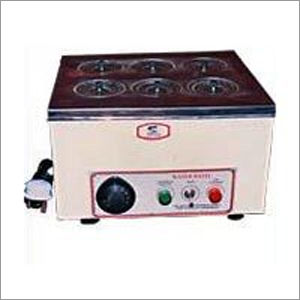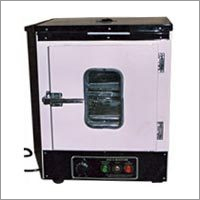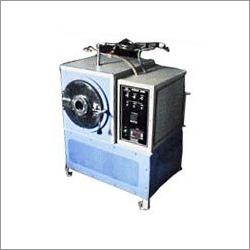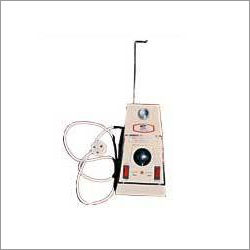Carbon Residue Apparatus
Carbon Residue Apparatus Specification
- Power Source
- Electric
- Voltage
- 230 V AC
- Measurement Range
- Determines carbon residue content in petroleum products
- Temperature Range
- Up to 550C
- Accuracy
- 2C
- Core Components
- Heater, insulated block, bath, crucible holders
- Capacity
- Approximately 10 ml per crucible
- Automation Grade
- Manual
- Feature
- Uniform heating, insulated body, removable crucibles
- Model No
- Standard Laboratory Model
- Frequency
- 50 Hz
- Equipment Materials
- Mild Steel Body with powder coating
- Type
- Electrical Heating Apparatus
- Usage
- Laboratory use for petroleum testing
- Dimension (L*W*H)
- Approx. 22 x 22 x 40 cm
Carbon Residue Apparatus Trade Information
- Minimum Order Quantity
- 1 Number
- Supply Ability
- 04 Per Month
- Delivery Time
- 3-8 Week
About Carbon Residue Apparatus
The Carbon Residue Apparatus we manufacture and export comprises of a solid metal bath having 5 wells to accommodate cocking bulbs. The heavy duty heating elements provided around the bath is supplied with 5 cocking bulbs, and one syringe. We bring for the clients Carbon Residue Apparatus of superior quality at affordable rates.
Manufactured as per
- IP-14, ASTM 524 and is 1448 (P:8) 1967 standard
Used to
- Determine the amount of carbon deposits when oil evaporates under specified condition
Features
- Durable
- Resistance to rust
- Easy to control
- Cost-effective
- Protected
- Low maintenance
Advanced Heating Technology for Accurate Testing
Equipped with a Nickel Chrome wire heating element, the Carbon Residue Apparatus offers consistent, precise heating. The uniform thermal distribution, enhanced by an insulated body and removable crucibles, promotes reliable results during petroleum residue analysis up to 550C.
Durable Construction Ensured by Powder Coated Finish
Crafted from mild steel and finished with powder coating, this apparatus stands up to laboratory conditions with increased corrosion resistance. This protective finish boosts longevity and maintains structural integrity while simplifying maintenance.
Versatile Bath Selection for Multiple Applications
Choose between oil bath or air bath mediums as required by testing protocols. This flexibility allows the apparatus to adapt to various petroleum sample requirements, providing effective thermal control and operational reliability in diverse laboratory setups.
FAQs of Carbon Residue Apparatus:
Q: How does the Carbon Residue Apparatus determine carbon residue in petroleum products?
A: The apparatus heats petroleum samples in crucibles (up to 10 ml each) using a Nickel Chrome wire element, either in an oil or air bath, reaching temperatures up to 550C. This process vaporizes volatile materials, leaving behind a carbon residue measured according to testing standards.Q: What benefits does the Nickel Chrome wire heating element provide?
A: Nickel Chrome wire ensures rapid, even heating, and stability at high temperatures. This enhances accuracy and uniformity in residue determination, while supporting consistent laboratory testing performance.Q: When should I use the oil bath versus the air bath medium?
A: Select the oil bath when your testing protocol requires stable, high-temperature conditions or longer sample processing times. For faster heating or where oil contamination must be avoided, the air bath is suitable, offering flexibility based on sample characteristics.Q: Where is this apparatus typically used?
A: This electrical heating apparatus is widely utilized in laboratory environments across petroleum research, quality control, academic institutions, and by exporters, manufacturers, and suppliers involved in petroleum analysis in India.Q: What is the process for cleaning and maintaining the Carbon Residue Apparatus?
A: After usage, allow the apparatus to cool. Remove crucibles for separate cleaning, then wipe down the powder coated body and bath with a non-abrasive cloth. Periodic checks on the heating element and insulation ensure longevity and consistent results.Q: How does the powder coated mild steel body benefit laboratory usage?
A: The powder coated finish protects the apparatus from corrosion, extends its operational lifespan, and makes it easier to clean, ensuring the instrument remains robust and reliable through extensive use.Q: What are the main advantages of removable crucibles in this apparatus?
A: Removable crucibles allow for easy loading and cleaning, facilitate precise sample handling, and ensure operational flexibility when processing multiple petroleum samples during testing.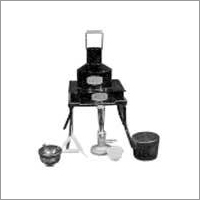

Price:
- 50
- 100
- 200
- 250
- 500
- 1000+
More Products in Scientific & Biotechno Lab Instruments Category
Rectangular Water Bath
Price Range 10000.00 - 600000.00 INR / Number
Minimum Order Quantity : 1 Number
Frequency : 50 Hz
Equipment Materials : Stainless Steel Chamber, Powder Coated Outer Body
Type : Rectangular Water Bath
Capacity : 8 liters
Bacteriological Incubator
Price Range 10000.00 - 600000.00 INR / Number
Minimum Order Quantity : 1 Number
Frequency : 50 Hz
Equipment Materials : Mild Steel, Powder Coated
Type : Laboratory Incubator
Capacity : 90 Liters
Vacuum Oven
Price Range 10000.00 - 600000.00 INR / Number
Minimum Order Quantity : 1 Number
Frequency : 50 Hz
Equipment Materials : Stainless Steel Chamber, Powder Coated Outer Body
Type : Laboratory Vacuum Oven
Capacity : 50 Liters
Melting Point Apparatus
Price Range 10000.00 - 600000.00 INR / Number
Minimum Order Quantity : 1 Number
Frequency : 50 Hz
Equipment Materials : Powder coated steel body with glass viewing window
Type : Melting Point Apparatus
Capacity : 3 capillary tubes per test
Factory Address :
Plot No 47, Emerald Indl Estate, Kidc Indl Area, Deku Village, Khalapur Taluk,
Khopoli Raigad, Maharahtra

 Send Inquiry
Send Inquiry
